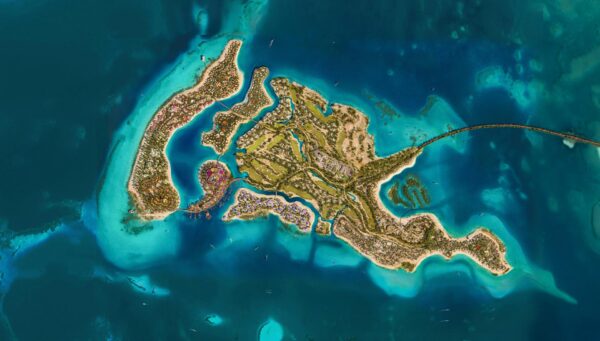In a bold move to diversify its economy and champion a new era of tourism, Saudi Arabia is bringing to life one of the world’s most ambitious luxury travel destinations: The Red Sea Project. Spearheaded by Red Sea Global (RSG), a multi-project developer owned by the Kingdom’s Public Investment Fund (PIF), this initiative is not merely a collection of resorts but a model for regenerative tourism on a monumental scale.
A Vision Driven by Sustainability and Conservation
The Red Sea Project is a cornerstone of Saudi Vision 2030, a comprehensive plan to transform the nation. The project’s core mission is to set new global standards for sustainable and responsible development. Spanning a pristine area of 28,000 km² on the west coast of Saudi Arabia, the destination includes more than 90 islands, volcanoes, mountains, and desert dunes.
A series of wide-ranging environmental studies informed the master plan, leading to a crucial commitment: less than 1% of the total site area will be developed, with 75% of the islands preserved for conservation. This commitment is part of a larger goal to achieve a 30% net positive conservation benefit by 2040, ensuring that the development actively enhances the environment rather than simply minimizing its impact. The project aims for 100% reliance on renewable energy, with a desalination plant that operates with zero impact on marine life and a strict no-single-use-plastics policy.
The Grand Scale of Development
The project was officially announced in July 2017, with construction commencing in February 2019. It is being developed in phases, with key milestones already achieved:
Phase One (2019-2022): Focused on initial infrastructure, including the Red Sea International Airport, which began operations in September 2023. This phase also saw the opening of the first inland resort, Six Senses Southern Dunes, followed by the St. Regis Red Sea Resort and Nujuma, a Ritz-Carlton Reserve, as the first island destinations.
The Future (by 2030): Upon its full completion, the destination will feature 50 hotels with 8,000 rooms and over 1,000 residential properties across 22 islands and six inland sites. It is projected to attract up to one million visitors annually, a number carefully limited to protect the delicate ecosystem.
Key Landmarks and Experiences
The Red Sea Project is home to several distinct developments, each offering a unique experience:
- Shura Island: Known as the main hub, this island will host 11 world-class resorts, a championship golf course, and a luxury marina.
- Ummahat Islands: Home to the luxurious St. Regis and Ritz-Carlton Reserve resorts, these islands are a haven for exclusive getaways.
- Desert Rock: A mountain resort designed to be integrated directly into a hidden valley, offering guests an immersive, nature-centric experience.
- Red Sea International Airport (RSI): This state-of-the-art, sustainably designed airport serves as the gateway to the destination, providing convenient access for international travelers.
A New Global Standard
The Red Sea Project is more than a tourism destination; it is a declaration of Saudi Arabia’s commitment to a diversified, sustainable, and forward-thinking future. By blending unparalleled luxury with a dedication to environmental regeneration, RSG is pioneering a new model for tourism that seeks to enrich the planet and its people. This monumental effort is poised to become a global blueprint for how large-scale developments can be a force for good.
Citations:
Red Sea Global Official Website
The Red Sea Project on Wikipedia
Saudi Vision 2030 Official Website
Red Sea Project: Sustainability & Innovation (Scavo.sa)
Red Sea Global Sustainability Report 2023



